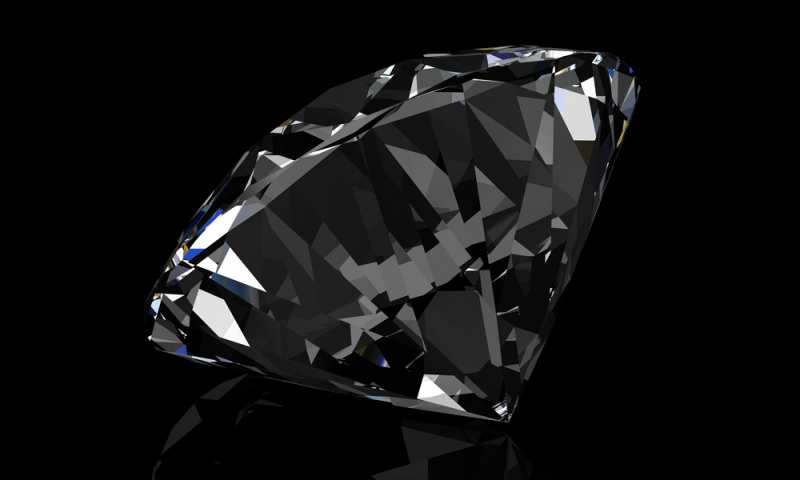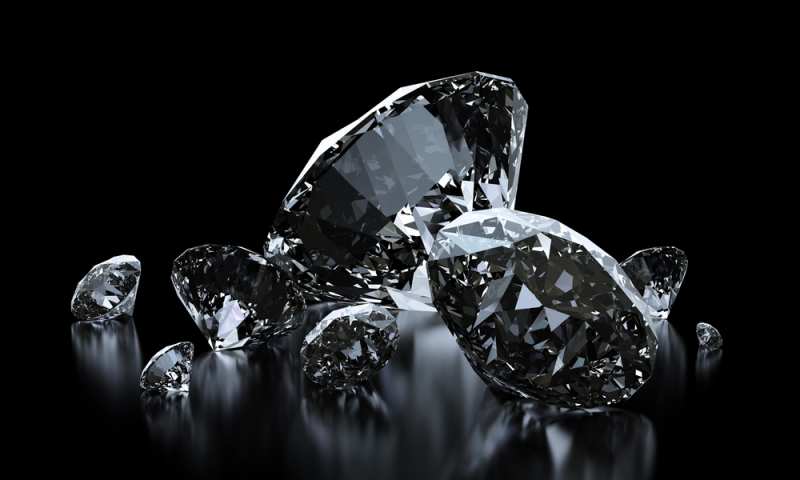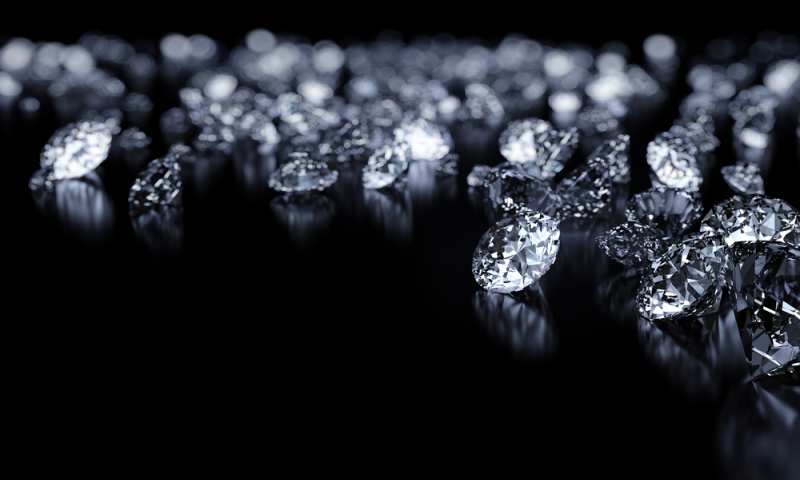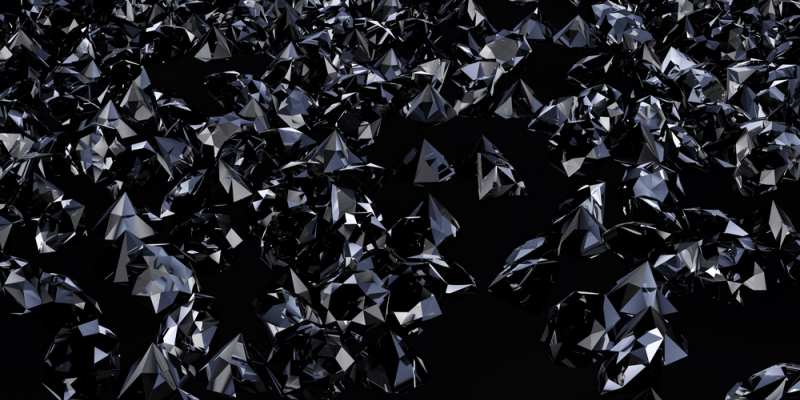Diamonds have held a significant role in our culture for centuries, but in the past century, their sales and popularity have skyrocketed. Their exquisite beauty and the intricate art of diamond cutting make them worth the substantial investment.
Traditionally, only the purest diamonds have been highly sought after and showcased in showrooms. However, there’s a new contender in town that has been causing quite a buzz in the industry: black diamonds. These unique gems have gained increasing value and popularity in recent times.
To shed light on these captivating dark beauties, we’ve put together a guide that addresses a pressing question: How can you test black diamonds? By providing answers to this question, we aim to help you distinguish the genuine black diamonds from imitations and gain a better understanding of what makes them truly special.
Let’s dive in and explore the world of black diamonds!
DESIGN YOUR OWN ENGAGEMENT RING: START WITH A SETTING OR START WITH A DIAMOND. IT’S REALLY UP TO YOU!

What Are Black Diamonds?
Carbonados, commonly known as black diamonds, belong to the category of the hardest diamond forms. Their chemical composition sets them apart from traditional diamonds. While regular diamonds consist solely of tightly stacked carbon atoms in a crystal structure, carbonados possess an additional blend.
These stunning specimens are a fusion of diamond, graphite, and amorphous carbon. They are formed under the same intense conditions as regular diamonds but with added ingredients and heightened heat and pressure.
With such a composition, it’s evident why they rank among the toughest variations of diamonds. The impurities and high-density nature of carbonados make them challenging to cut. Consequently, they are often not cut to the same standard as other diamonds.
Although it is possible to achieve perfect cuts, many professionals hesitate to take on the risk, and black diamonds are still not valued as highly as pure diamonds. However, don’t be deceived by their price. These gems are experiencing a surge in popularity like never before. Unfortunately, this growing demand has also fueled the rise of counterfeit black diamonds.
So, how can you determine whether a black diamond is authentic or not?

How To Test Black Diamonds?
There are several tests you can perform to determine if you have a genuine black diamond or a diamond-like imitation. We have selected the three most commonly used tests for this purpose.
It’s important to note that while these tests can be effective, the most accurate results can be obtained by taking the diamond to a professional laboratory. Therefore, it is advisable to seek the expertise of a trained professional for precise identification.
Fiber-Optic Lights
One test involves shining a fiber-optic light onto the black diamond. In a genuine black diamond (carbonado), no brown spots should appear when the light is directed at it. Carbonados are extremely dense and do not allow any light to pass through. If you observe any brown corners or areas, it indicates the presence of carbon rather than a black diamond.
A powerful Maglite flashlight can also yield similar results, as the principle is the same. However, fiber-optic lights may not be readily available to everyone and are often used by professionals, making this test less accessible for individuals.
Nevertheless, if you have access to the necessary equipment, the results are usually highly accurate.
10X Magnification
If you have spent time researching diamonds online, you may already be familiar with the term “10x magnification.” Diamonds are commonly examined under a 10x magnification loupe, as it is the standard level at which blemishes and inclusions can be detected.
How does this apply to black diamonds?
When observing a black diamond through a loupe, if you notice discoloration or uneven spots of color, there is a high likelihood that the diamond is not natural. Any color other than plain black indicates that light is penetrating the material. While it could still be a diamond, it can be guaranteed that it does not contain graphite.
Diamond/Moissanite Tester
An electronic diamond or moissanite tester can assess the thermal and electrical conductivity of a diamond. The process is simple: if the device indicates that the stone you are examining is not a diamond, it means you have a treated black diamond rather than a natural one.

The Difference Between Pure And Black Diamonds
We have discussed the nature of black diamonds and their distinction from translucent diamonds. It’s important to note that there are two types of diamonds commonly referred to as black: natural black diamonds (carbonados) and diamonds that have been treated to resemble carbonados.
While there’s nothing inherently wrong with treated diamonds, they can appear identical to natural ones to the naked eye. However, purchasing treated diamonds may not offer a good deal in terms of value. Natural black diamonds are heavily included, preventing light from passing through. Unlike low-grade colorless diamonds, the inclusion is a desirable characteristic in carbonados.
When sellers take low-grade diamonds and pass them off as natural black diamonds, they are attempting to profit unfairly. There is a clear distinction between the two, so it’s advisable to opt for natural black diamonds.
Testing becomes crucial in ensuring that you know what you’re buying. The tests mentioned in the previous section help identify genuine black diamonds. If light passes through the material, it indicates that it’s not a black diamond.
Now, let’s explore the unique features of black diamonds and how they are graded. Black diamonds do not fit into the traditional clarity scale of regular diamonds, not even treated ones. They are heavily included, making them difficult to place on the clarity scale. Consequently, professionals often dismiss the cut grade for black diamonds due to the challenges involved in cutting them properly.
That leaves us with two remaining categories: carat weight and color. Carat weight can be measured accurately, while color grading follows a different system. The color grading scale used for colorless or near-colorless diamonds does not apply to black diamonds. Instead, black diamonds are typically categorized as “Fancy Black” since they lack color saturation.
Black diamonds are considered rare, contrary to the common misconception that they are as abundant as average gemstones due to their lower price. The diamond industry operates differently, and supply and demand dynamics do not apply in the same way. The demand for traditional diamonds has been heavily influenced by marketing campaigns over the years, leading to their high prices. However, colored gemstones, including black diamonds, receive lower grades due to industry standards. Despite their rarity, black diamonds have yet to attain the same value as traditional diamonds.
Nevertheless, the popularity of natural black diamonds has been steadily increasing, although they may never reach the same value as pure traditional diamonds.

Final Words
In conclusion, identifying and testing black diamonds can be challenging, but it’s an essential aspect of making a wise investment. By understanding how to test black diamonds, you have the tools to recognize and appreciate these captivating dark-colored gems.
While black diamonds may not possess the same monetary value as their lustrous counterparts, they possess a distinct charm and allure. Just like the black sheep of the family, they have their unique qualities that make them intriguing and sought after. So, embrace their uniqueness and discover the hidden beauty within these extraordinary gems!


